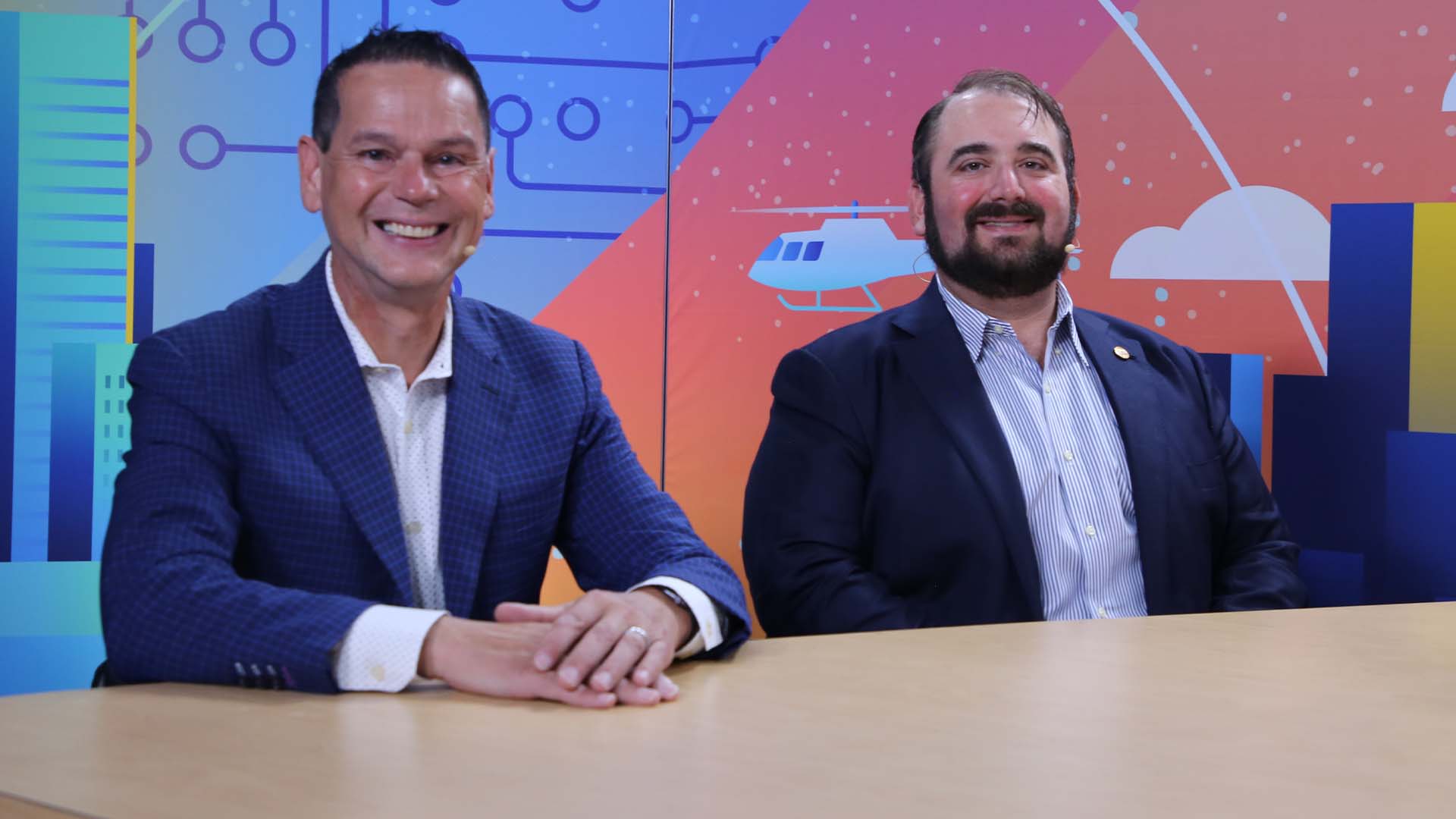 CLOUD
CLOUD
 CLOUD
CLOUD
 CLOUD
CLOUD
The world of IT infrastructure is in a state of perpetual evolution, with containers and virtual machines emerging as pivotal players.
An intricate tapestry exists that weaves together containers, VMs, cloud solutions and the power of artificial intelligence. Innovation does not entail discarding what works; rather, it involves a harmonious coalescence of proven methods and novel technologies.
“We’re at the beginning of a great evolution in the industry,” said Pete Brey (pictured, left), global product executive at IBM Corp. “The challenge they have is how [to] move from yesterday’s architectures and the way things were done into this brave new world of containers. Virtual machine technology is not going to go away anytime soon. But people are attracted to modernizing their applications [and] their infrastructure. We’ve been working between IBM and Red Hat very closely to recognize that’s a need in the marketplace but also deliver some of the technology that’s going to enable that to happen for them.”
Brey and Bradley Knapp (right), product leader of IBM Cloud for SAP at IBM, spoke with theCUBE industry analysts Lisa Martin and Rob Strechay at VMware Explore 2023, during an exclusive broadcast on theCUBE, SiliconANGLE Media’s livestreaming studio. They discussed the quest for flexibility in hybrid cloud environments, the bridge between cloud and on-premises solutions, and the intersection of AI and data in this dynamic landscape. (* Disclosure below.)
The importance of flexibility in the era of hybrid cloud environments is paramount. While organizations want to move from traditional architectures to modern container-based solutions, the need for flexibility mandates that VM technology remains a crucial component.
While VMs continue to play a vital role, the journey toward modernization is guided by the demand for the benefits that containers offer. IBM and Red Hat aim to provide the technology required to bridge the gap between legacy and innovative environments, according to Brey. A recent use case provided a prime example.
“In this particular case, it’s a healthcare software company,” he said. “They were talking about how they’ve already modernized a part of their portfolio … and they’ve been working very closely with Red Hat to port their applications onto OpenShift, but they still have some of the interfaces and some of the APIs in their legacy environments.”
Companies with large data real estates usually combine large on-premises deployments with the flexibility of workloads in the cloud. VMware Inc.’s solutions create that hybrid cloud scenario where they can “put workloads where they make the most sense,” according to Knapp. “The ability to port your VMware workloads, run them on-premise, run them in cloud, run them in a hybrid manner gives you that flexibility that you need that you’re not going to get if you don’t have the glue that stitches the hybrid cloud together.”
It’s not about abandoning one infrastructure for the other, but rather about leveraging each environment’s strengths to create a seamless ecosystem that aligns with an organization’s specific needs. While on-premises environments are not fading away, newer applications are born in the cloud, and there is a growing inclination toward embracing both options.
Here’s the complete video interview, part of SiliconANGLE’s and theCUBE’s coverage of VMware Explore 2023:
(* Disclosure: IBM Corp. sponsored this segment of theCUBE. Neither IBM nor other sponsors have editorial control over content on theCUBE or SiliconANGLE.)
Support our mission to keep content open and free by engaging with theCUBE community. Join theCUBE’s Alumni Trust Network, where technology leaders connect, share intelligence and create opportunities.
Founded by tech visionaries John Furrier and Dave Vellante, SiliconANGLE Media has built a dynamic ecosystem of industry-leading digital media brands that reach 15+ million elite tech professionals. Our new proprietary theCUBE AI Video Cloud is breaking ground in audience interaction, leveraging theCUBEai.com neural network to help technology companies make data-driven decisions and stay at the forefront of industry conversations.